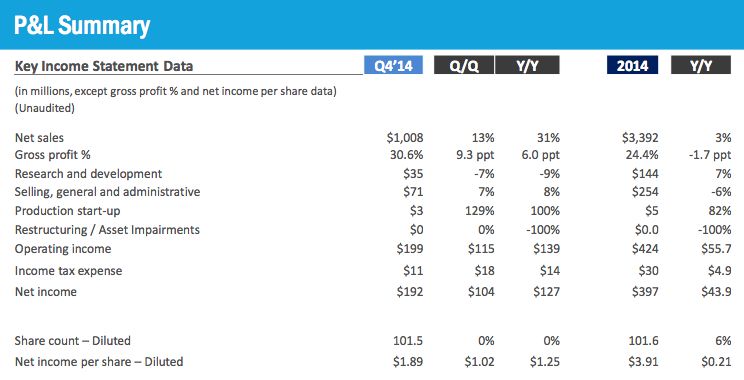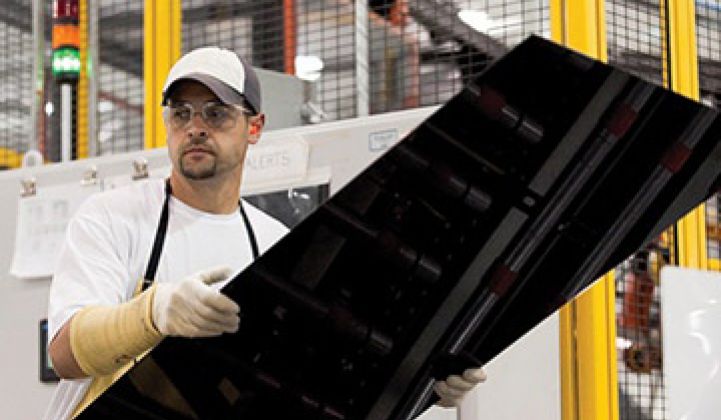First Solar missed the low end of its sales guidance but posted net income of $397 million on 2014 sales of $3.4 billion. Production, capacity utilization, and conversion efficiency showed positive results.
Q4 highlights and Q1 guidance
-
Book-to-bill ratio was 1.7 for the year
-
Potential bookings stand at 13.5 gigawatts
-
Guidance for Q1 2015 net sales is $550 million to $650 million
-
The company spoke of "significant progress" in the Southeast U.S., as well as encouraging signs from India and Turkey
During the quarter, First Solar set a new record for cadmium-telluride cell efficiency in the lab at 21.5 percent. The company also entered the commercial solar market with its biggest booking of the quarter -- 130 megawatts (AC) of the California Flats solar project devoted to Apple as an end user.
The reason First Solar's stock is up 10 percent today stems from yesterday's announcement that SunPower and First Solar are forming a solar project YieldCo. However, First Solar wouldn't discuss that transaction at this time. (Read more on the YieldCo here.)

Efficiency gains in cadmium-telluride PV panels continue
In 2011, First Solar's module conversion efficiency was 11.6 percent.
Today, First Solar noted that its full fleet average conversion efficiency for the fourth quarter was 14.4 percent compared to 13.4 percent in Q4 2014. The lead line at First Solar was averaging 14.8 percent in Q4.
More interestingly, First Solar has made some promised process changes in 2015, and now its "best lines averaged 15.8 percent [efficiency] for the month of February."
The CEO suggested that the modules coming off its production line are "roughly at parity" with silicon (from a temperature-adjusted standpoint).
Raffi Garabedian, First Solar's CTO, told GTM this afternoon, "We’ve proven that CdTe can beat multi at the research cell level (21.5 percent vs. 20.4 percent). Now we’re starting to prove that we can climb the same hill at production scale -- all consistent with our module roadmap. It takes time and a lot of effort, but our rate of improvement is far better than what we’re seeing in the silicon field."




